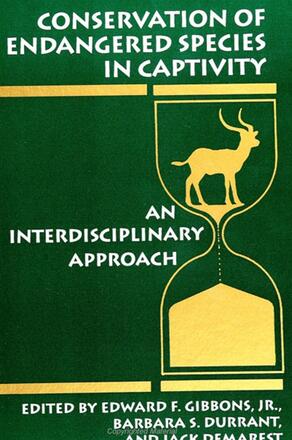
Conservation of Endangered Species in Captivity
An Interdisciplinary Approach
Alternative formats available from:
Description
This multi-disciplinary approach to conservation of endangered species in captivity is organized taxonomically and by scientific discipline. The seven taxonomic groups included are invertebrates; fish, reptiles and amphibians, birds, marine mammals, primates, and other mammals. Within each taxonomic group, four scientific disciplines are explored: conservation, reproductive physiology, behavior, and captive design.
Conservation chapters summarize the status of the taxonomic group both in the wild and in captivity. Reviewed in the reproductive physiology chapters are anatomy, endocrinology and physiology for females and males of the taxonomic group. In the section on behavior the functions of captive animal research, the methods used, and the problems encountered are discussed. And, in examining captive design the authors provide a general historical outline of the philosophies, trends, and scientific issues for the targeted taxonomic group.
Edward F. Gibbons, Jr. is Director of the Center for Science and Technology at Briarcliffe College. He is the lead editor of Naturalistic Environments in Captivity for Animal Behavior Research , also published by SUNY Press. Barbara S. Durrant is Head of the Reproductive Physiology Division of CRES at the Zoological Society of San Diego, Adjunct Professor of Biology at San Diego State University, and Adjunct Assistant Member of the Department of Cell Biology at The Scripps Research Institute. Jack Demarest is Professor of Animal Behavior at Monmouth College and a Research Associate at Rutgers University.
Reviews
"The editors and authors have brought together under one cover the essential elements and understanding necessary to create a meaningful conservation program to address the needs of a diverse group of endangered species. " — Wilbur B. Amand, V. M.D. , Zoological Society of Philadelphia
"It fills a void in the literature and is a book that I would likely adopt for one of my classes. Several of the chapters represent the only materials available on specific topics. Although there are other books with similar sounding titles, this is the only one with the scope to essentially cover the field indicated in the title. " — Hal Markowitz, San Francisco State University